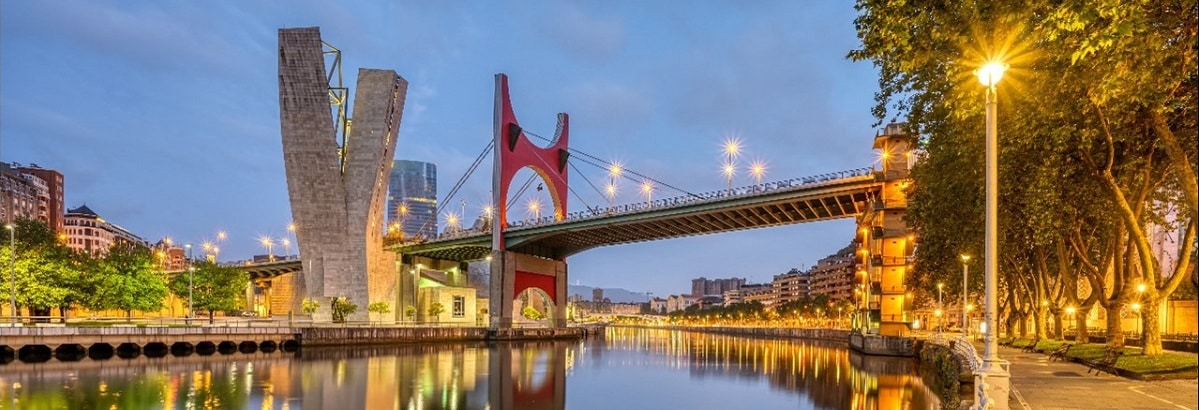The most famous city skylines around the world all have an iconic bridge that represents them. It’s not just a matter of beauty: these bridges sustain residents’ social and economic lives and are designed to withstand demanding daily activity.
Last March, an incident at the Francis Scott Key Bridge in Baltimore, Maryland (USA) highlighted the importance of these infrastructures and the enormous economic, practical, and emotional impact they can cause if they collapse. The acclaimed civil engineer Javier Manterola once stated that bridges are an element of the road, as Rubén Rodríguez Elizalde, a Public Works Engineer reminds us, since every road or railway must use them to overcome certain obstacles. A bridge’s characteristics are always defined by the associated road or railway: “widths, heights, super-elevations, layouts, etc., all provide data for the design and variables that constitute its functional aspects. Rarely does a bridge impose its own conditions on the road; a crossing must be truly exceptional, of the utmost difficulty and with exorbitant costs, for it to determine a bridge’s location and the geometric conditions that the road layout needs to conform to,” the expert explains.
Although there are a multitude of criteria for classifying bridges, their constituent material is one of the most commonly used. Apart from older structures that are still in service, which are usually made of stone, there are three types of bridges:
- Concrete bridges
- Metal bridges
- Mixed bridges (combination of concrete and steel).
“New materials are being used, but today virtually all of them are made of concrete, whether reinforced or pre-stressed, steel, or a mixture of the two,” he says.
Regarding the need to rehabilitate older bridges, which are often crucial to mobility in large cities, the expert states that there is no all-inclusive answer or single way to proceed. “In every case, you have to analyze the bridge’s state of repair and whether it’s strong enough to meet the demands it currently faces. If its state of repair is insufficient, or it has deteriorated, it needs to be either repaired or reinforced,” he explains.
Innovation at the service of design
Technological advances are having a decisive influence on urban bridge design and construction, and this is also happening in different domains. Rodríguez Elizalde cites five areas where innovation and development are transforming critical aspects of bridge construction, and he explains how:
1. Use of advanced construction materials
High-performance concrete (or ultra-high-performance concrete, UHPC)
This material is stronger and more durable than traditional concrete, so it allows for thinner and lighter structures, resulting in more sustainable and cost-effective construction.
Carbon fiber composites and other composite materials
These offer greater strength and durability with less weight, which reduces loads on structures and improves their efficiency.
2. Use of computer-aided design (CAD) technologies.
Building Information Modeling (BIM)
BIM makes it possible to create detailed three-dimensional models that incorporate information on all aspects of the structure, thus improving coordination during construction and subsequent maintenance and enhancing preventive maintenance and error reduction.
Simulation and structural analysis
This includes advanced simulation tools to predict bridges’ performance under various conditions, which optimizes the design and increases safety.
3. Innovative construction methods
Modular and prefabricated construction
This technique is becoming more and more established in the sector. It consists of the prior and external production of components, which are then installed in the proper place. This allows for more agile construction and greater control of the performance and characteristics of these elements, reducing the impact during the construction process.
3D printing
This technology enables the efficient creation of complex, customized components with less material waste.
4. Monitoring and maintenance technologies
Smart sensors and real-time monitoring systems
Integrated into the bridge structure, they can detect stresses, movements, and other indicators of wear and tear, allowing predictive maintenance and extending the life of the structure.
Drones and robots
These unmanned aerial vehicles allow inspections in hard-to-access places and provide accurate data, with no need to risk people’s safety, install scaffolding, or disrupt the use of infrastructures.
5. Sustainability and energy-saving measures
Integration of renewable energy sources
Some modern bridges incorporate elements to generate and self-supply energy, such as solar panels or wind turbines, which reduce their carbon footprint.
Use of recycled materials
Use of recycled materials and sustainable construction practices as methods that minimize environmental impact.
Regulations adapted to the environment
In order for a bridge’s design to meet current regulations, its geographic location must be considered, since “construction regulations vary significantly between countries and regions,” Rodriguez Elizalde says. In fact, no construction can be analyzed retroactively, since the standards have also evolved. “There are local, national, and international regulations and codes. There are design standards that address the type of structure and the loads to be considered, as well as their strength. Some standards establish safety and accessibility requirements, while others address inspection and maintenance, and more recently, environmental and sustainability requirements,” he explains.
All these requirements are necessary, since bridges are an essential part of everyday life in cities. “They are vital structures to keep things running efficiently. They improve connectivity, reduce traffic congestion, and make roads safer (especially when it comes to ensuring a quick response in emergency situations), positively influencing urban economic development and the quality of life of citizens,” he concludes.
The contributor to this article is…

Rubén Rodríguez Elizalde is a Public Works Engineer (degree in civil engineering) and holds a bachelor’s degree in building and a PhD in architecture and heritage. He also has a university degree in occupational risk prevention.
At a professional level, he specializes in structural pathology and rehabilitation and has conducted preventive management work, mainly in the construction, metal, and entertainment sectors.
He has coordinated the health and safety of well-known works, such as the final demolition of the Windsor Building in Madrid, the construction phase of the Puerta de Las Rozas Bridge, the Municipal Museum of Torrejón de Ardoz, and the refurbishment of the Old Printing Works in Madrid. He is currently a lecturer at various universities, including the Universidad Europea de Madrid and the Universitat Oberta de Catalunya.





